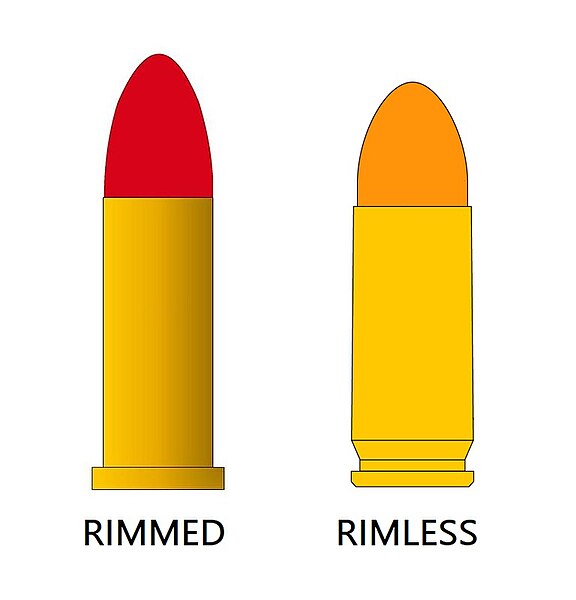The .45 ACP, also known as .45 Auto, .45 Automatic, or 11.43×23mm is a rimless straight-walled handgun cartridge designed by John Moses Browning in 1904, for use in his prototype Colt semi-automatic pistol. After successful military trials, it was adopted as the standard chambering for Colt's M1911 pistol. The round was developed due to a lack of stopping power experienced in the Moro Rebellion in places like Sulu. The issued ammunition, .38 Long Colt, had proved inadequate, motivating the search for a better cartridge. This experience and the Thompson–LaGarde Tests of 1904 led the Army and the Cavalry to decide that a minimum of .45 caliber was required in a new handgun cartridge.
.45 ACP cartridge full metal jacket
Cross-sectional diagram of U.S. Army .45 ACP ball cartridge for the Model 1911 pistol, with dimensions in inches
11.43x23 mm Automatic Colt Pistol Mod. 1911 (Peters Cartridge Co, USA)
.45 ACP pistol cartridge, FMJ bullet
A rim is an external flange that is machined, cast, molded, stamped, or pressed around the bottom of a firearms cartridge. Thus, rimmed cartridges are sometimes called "flanged" cartridges. Almost all cartridges feature an extractor or headspacing rim, in spite of the fact that some cartridges are known as "rimless cartridges". The rim may serve a number of purposes, including providing a lip for the extractor to engage, and sometimes serving to headspace the cartridge.
Rimmed .357 Magnum revolver ammunition
Rimmed vs Rimless cartridges
Rimless 9mm Parabellum pistol cartridges







